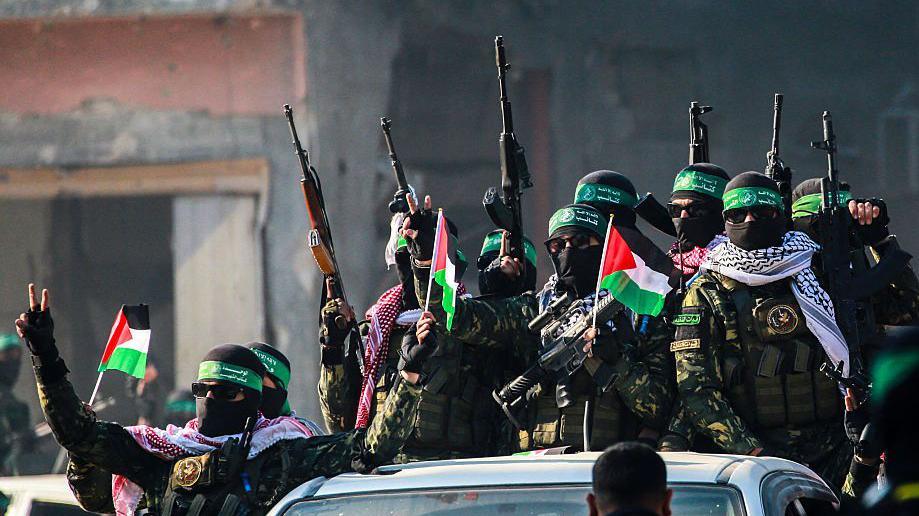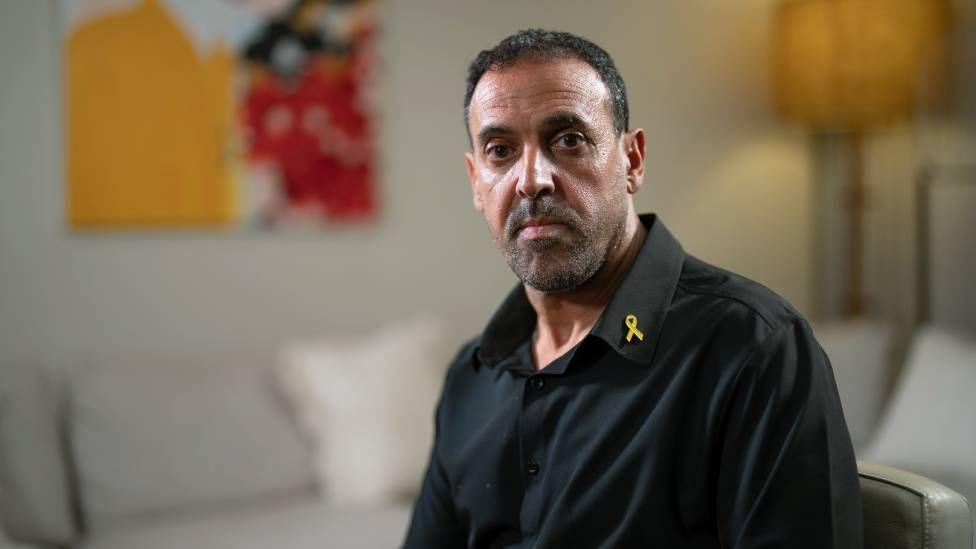Inside one battle-scarred Gaza building, displaced families tell the story of the war
- Published
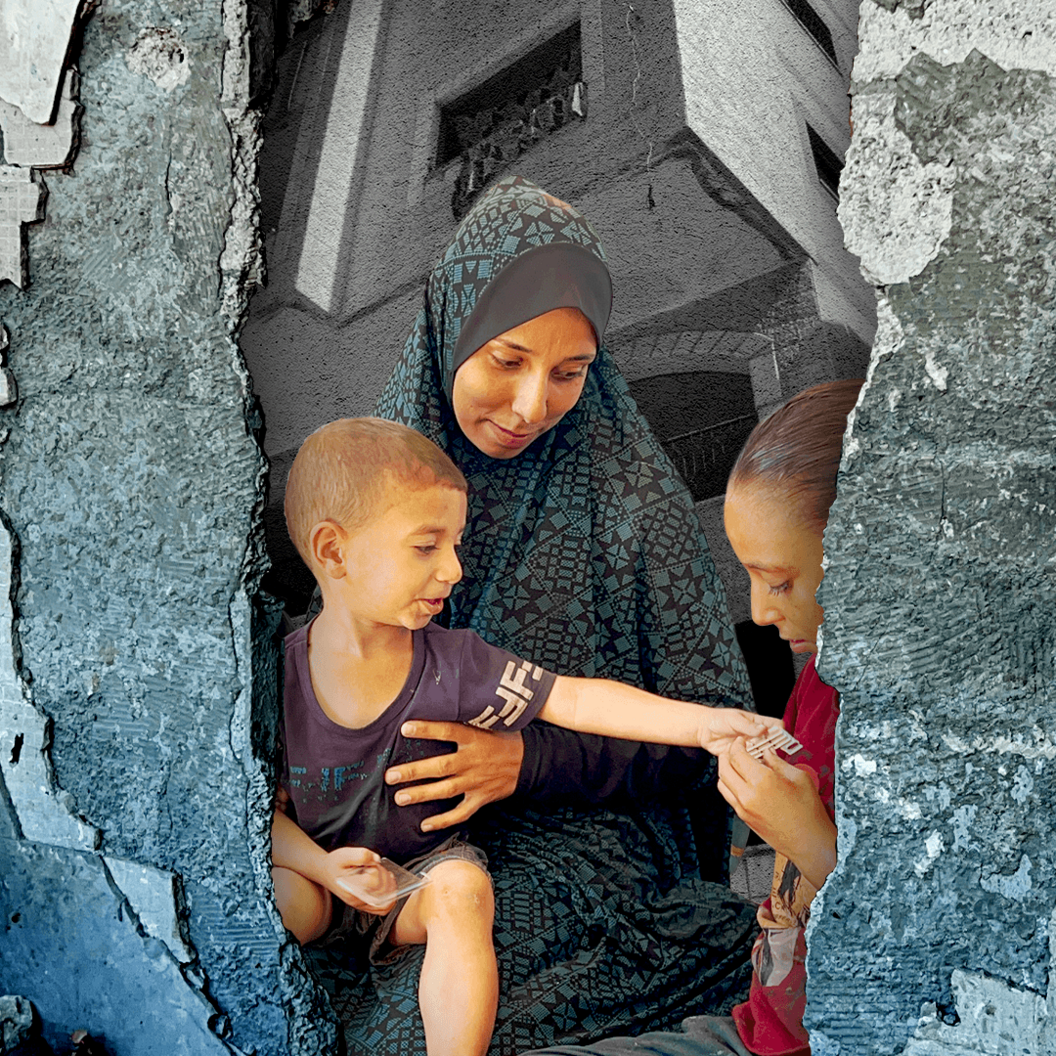
The Skeik building, in a quiet road off Omar al-Mukhtar Street in western Gaza City, was a familiar sight to Gaza's lovers.
The tree-lined street that ran beside it was once a favourite place for courting couples, eager to avoid Gaza's socially conservative gaze.
But the road nicknamed "Lovers' Street" – and the six-storey building that overlooks it – is now surrounded by rubble. There are few residents left who remember the old days. Those hiding here now are not running from Gaza's disapproval, but from Israeli tanks.
Gaza's war has left this once-glitzy neighbourhood in ruins. The smart shops and restaurants running down to the beach are now pockmarked with shrapnel and bullet holes, the park with its French-manicured trees, is buried under grey rubble.
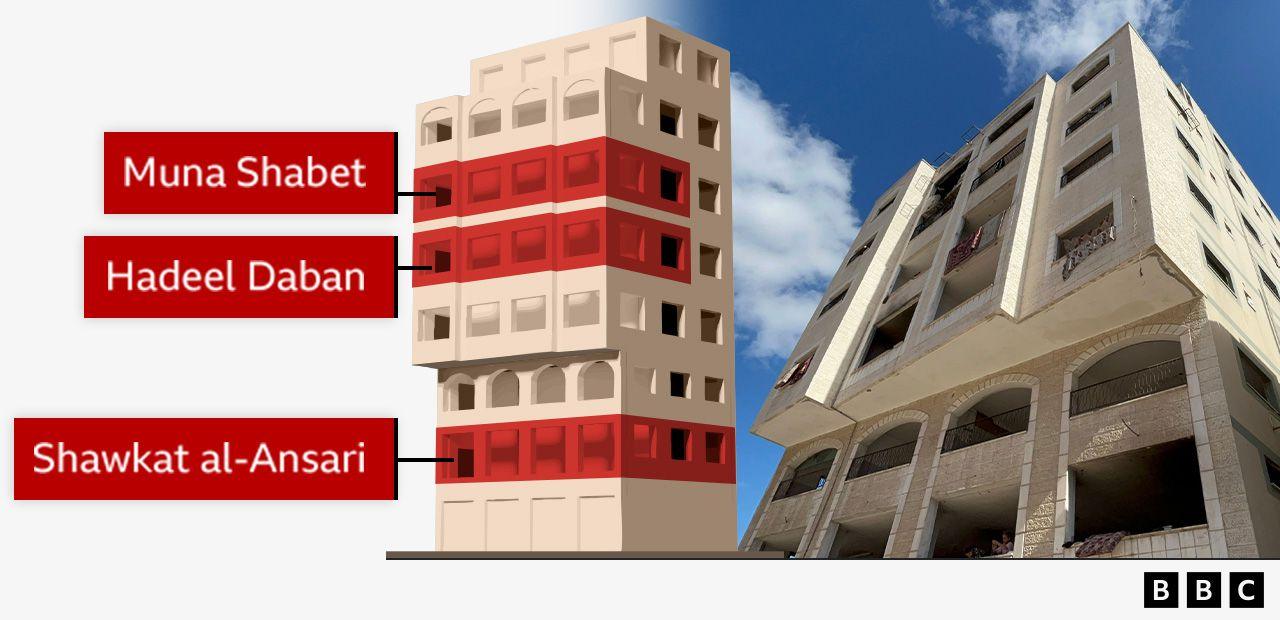
The Skeik building itself is still standing, but its walls are now splattered by shrapnel and a large artillery-sized hole has punched through an upper floor. Its pre-war faces replaced by an ever-changing confetti of displaced people.
Two years after Gaza's war began, this one building offers a snapshot of how the conflict has eroded ties to home and community among Gaza's people, and what impact that has had.
The previous tenants of the Skeik building are long gone. Above the boarded-up storerooms on the ground floor, eight of the building's 10 apartments have become temporary homes for families displaced by the war.
Hadeel Daban - fourth floor
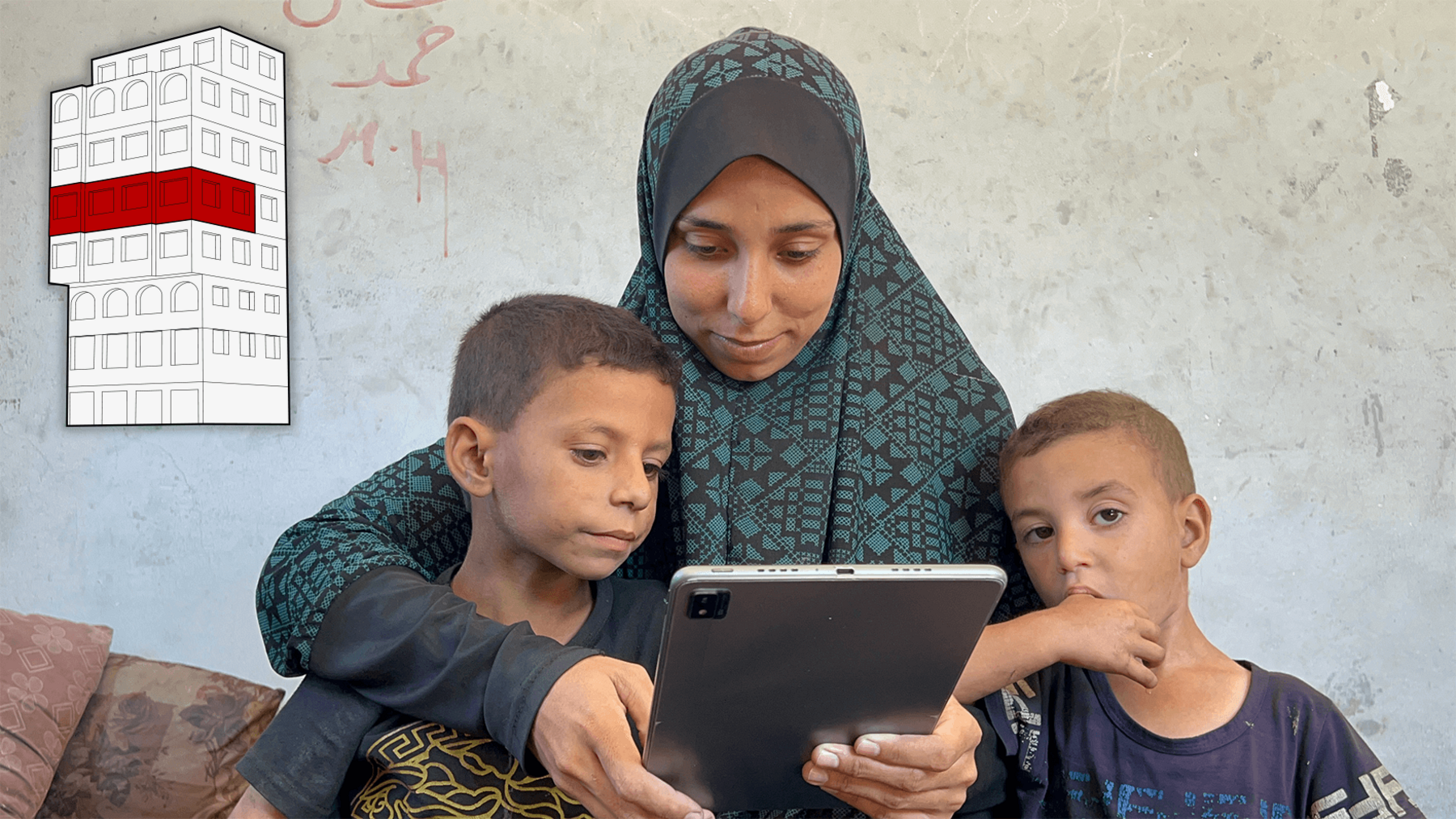
Twenty-six-year-old Hadeel Daban lives on the fourth floor with her husband and three young children: nine-year-old Judi, six-year-old Murad and two-year-old Mohammad.
The family arrived here two months ago, paying 1,000 shekels ($305; £227) a month to camp in the empty rooms.
"The people who were here before us left because it was dangerous," Hadeel said. "Shrapnel hits the walls here, but it's still better than a tent."
The family's few belongings are neatly stashed in piles of bags along the walls. Torn sheets cover the gaping holes where the windows used to be. It's the 12th place the family has moved to.
"When loading our belongings on a cart, I put my children on top of it all and tell them to play with the items, like the kitchen stuff," Hadeel told me. "I tell them we're going to live a different life, a bit away from the one we had."
The family home stands less than a mile away, in Gaza City's al-Tuffah neighbourhood. They fled in the first week of the war, after a relative's apartment above theirs was hit.
They returned a few months later. But on 15 March 2024, a strike on the building next door to them killed Hadeel's mother-in-law, injured the three children and buried Hadeel's husband alive.
"We spent hours searching for him, and found him under the rubble," she said.
Her husband, Izz el-Din, was unconscious. They took him to al-Shifa hospital, where Hadeel says she was told her husband had a skull fracture and was in a coma.
Three days later, he was still being treated when Israel sealed the hospital and began a two-week military operation there, to root out Hamas command posts, it said.
It was only when Israeli forces finally withdrew that Hadeel was reunited with her husband, fragile but alive.
Hadeel told us he still needed regular medical checks. "I used to take him to a neurologist [in Gaza City], but six weeks ago all the doctors moved to the south," she said.
A home is not just shelter or belongings. And all three families we spoke to in the Skeik building had moved multiple times.
"None of my neighbours are my neighbours anymore, because new people come every month," Hadeel said. "I don't even know where my original neighbours are – some went south, some were killed or injured. There are no neighbours anymore."
On the day our colleague met Hadeel, Gaza City was emptying again as hundreds of thousands of people headed for safer areas further south.
The Israeli army, advancing through the city, had issued "a last warning" to leave. But the families we spoke to were planning on staying put.
While Hadeel was talking to our cameraman, a series of explosions echoed through the apartment.
Through the windows, huge grey clouds rose in the middle distance.
Neither of her young sons even flinched.
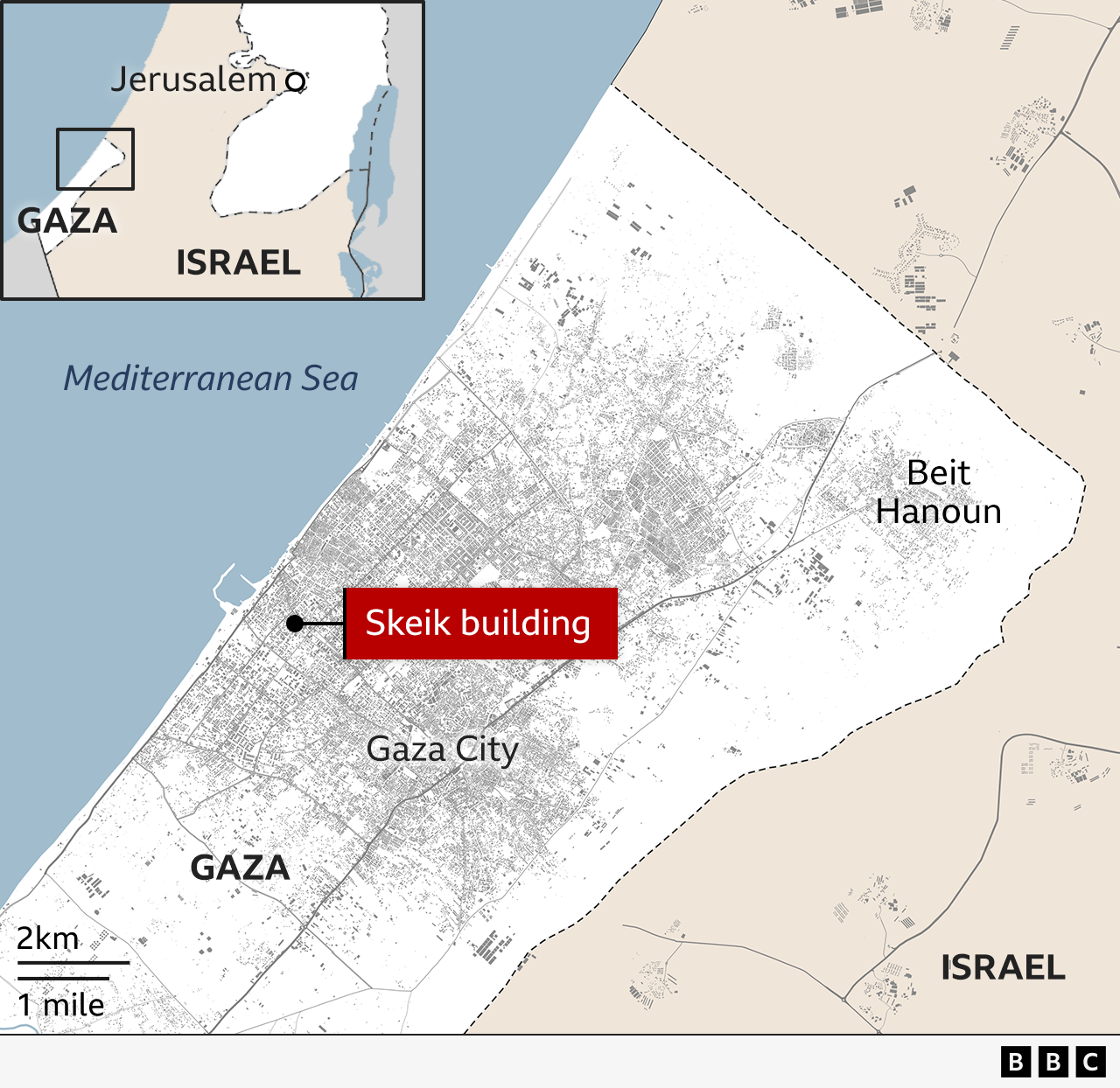
The Skeik building was built in 2008, on the back of the construction boom that swept Gaza City in the mid-1990s. A prime location right next to the American International School and a block away from the Palestinian parliament – both now in ruins.
It was this central location, off the main Omar al-Mukhtar street, that put the Skeik building in the path of Israeli tanks during the first months of the war.
Al-Shifa hospital lies two blocks to the north. Within weeks of the invasion, Israel's army moved in to capture the complex, saying it was being used as a Hamas base.
Troops approached from several directions, including the roads around Omar al-Mukhtar street.
Near the back of the Skeik building, a large rectangular hole has been blown in the wall. Inside, Hebrew graffiti reads, "the last Samurai" – a reference to a Hollywood film about a 19th Century Japanese warrior outgunned by modern weapons.
We asked Israel's army whether its forces had ever used the building or fought there. We received no reply.
But the building's owner, Shaker Skeik, told us the block had been used as an observation post by Israeli troops during operations.
And Israel said it had struck several compounds used by Palestinian snipers in the area in March.
Ground forces remained in Gaza City for months during the first months of the war, launching a second assault on al-Shifa hospital in March 2024, while Hadeel's husband was being treated inside.
With such a rapid turnover of residents, no one in the building now remembers what happened in those early months of the war.
But the fighting still continues around it.
Muna Shabet - fifth floor
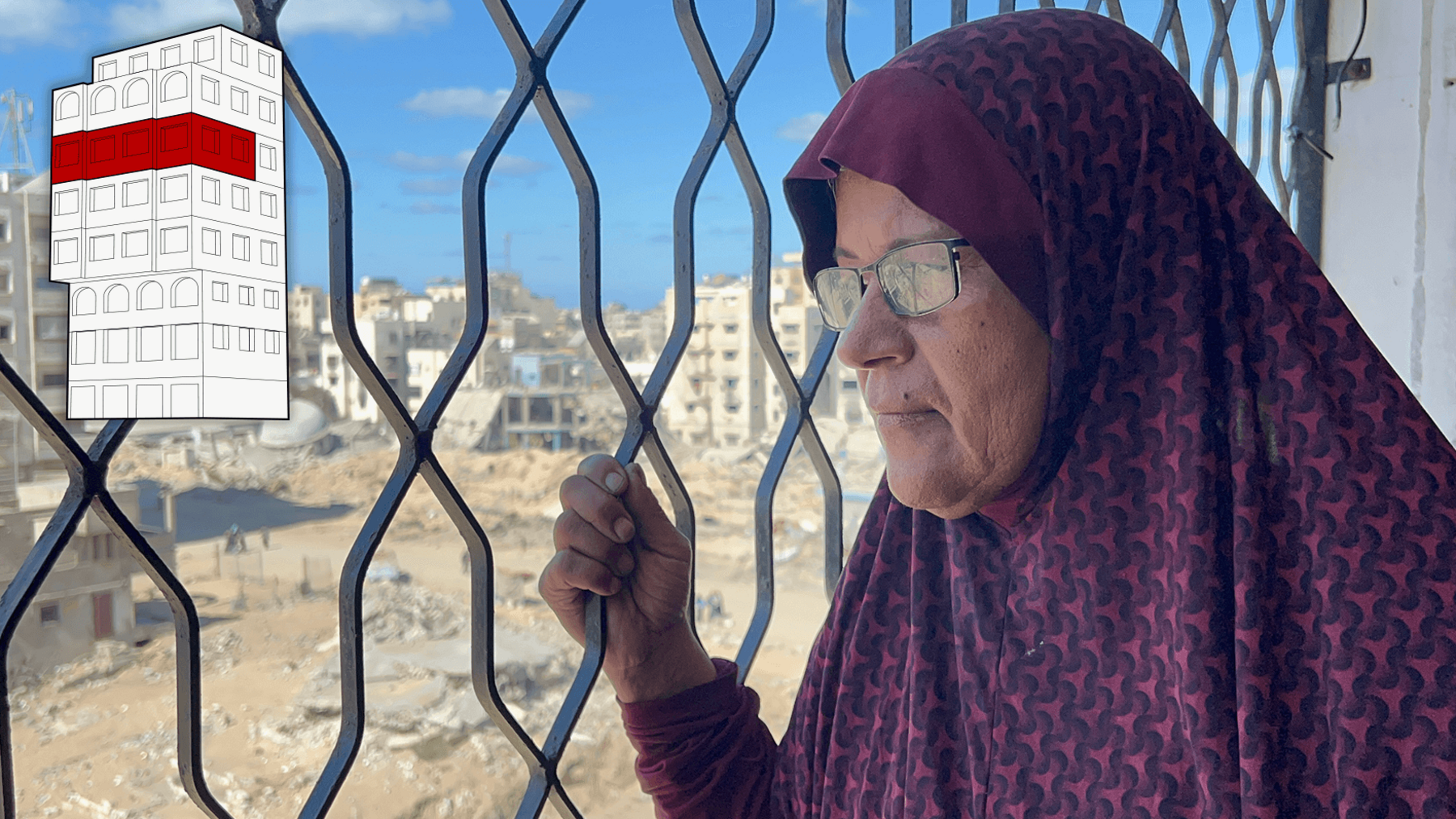
In the apartment above Hadeel's, 59-year-old Muna Amin Shabet plays with her grandchildren beneath large bullet holes punched in the wall.
"Two days ago, bullets hit here, inside the building," she explained. "I grabbed the children and ran with them over there, where it's safer. We sat there praying to God that it would be OK. The children were terrified."
Muna is also from al-Tuffah neighbourhood. She's been living here since August with her husband, three of her children, and her grandchildren. They aren't paying rent. The family lost everything, Muna says, when their home was destroyed weeks into the war.
"They levelled the entire al-Tuffah area – all of it, not one house was left," she said. "We are starting life again, collecting spoon by spoon, plate by plate. Famine came, and we ground pigeon-feed to eat, and lived on wild greens," she told us. "After two years of war, I say I am not alive, I am one of the dead."
Another resident, from the northern town of Beit Lahia, told us his area was now a "wasteland", after Israel's army razed it to the ground. "There are no houses, or even any signposts left, to tell you there was once a neighbourhood here," he said.
The UN says 90% of Gaza's residential buildings have been damaged or destroyed. Whole neighbourhoods - with their shared history, family ties, and social support – demolished.
But the idea of home is harder to destroy than bricks and mortar.
When our cameraman visits Muna's apartment, two of her granddaughters are drawing a picture. It's an idyllic story-book image of a house – small and neat, with a sloping red tile roof. The sun is perched on the horizon, the sky is pink and blue, there are trees and plants.
It looks nothing like where they live.
And the widespread destruction of housing and communities has often meant families splintering to survive.
Of Muna's five sons, two have moved to the south, another has gone to stay with his in-laws. The others, she says, have come and gone. Even she and her husband spent months apart before moving to the Skeik building, while Muna sheltered with relatives.
The extended family that once surrounded her and anchored her world is fraying.
"We are scattered. The separation is the hardest thing," she said. "Life has been stripped away. My health is gone. Our home is gone, and the dearest people to our hearts are gone - nothing is left for us."
Shawkat al-Ansari - first floor
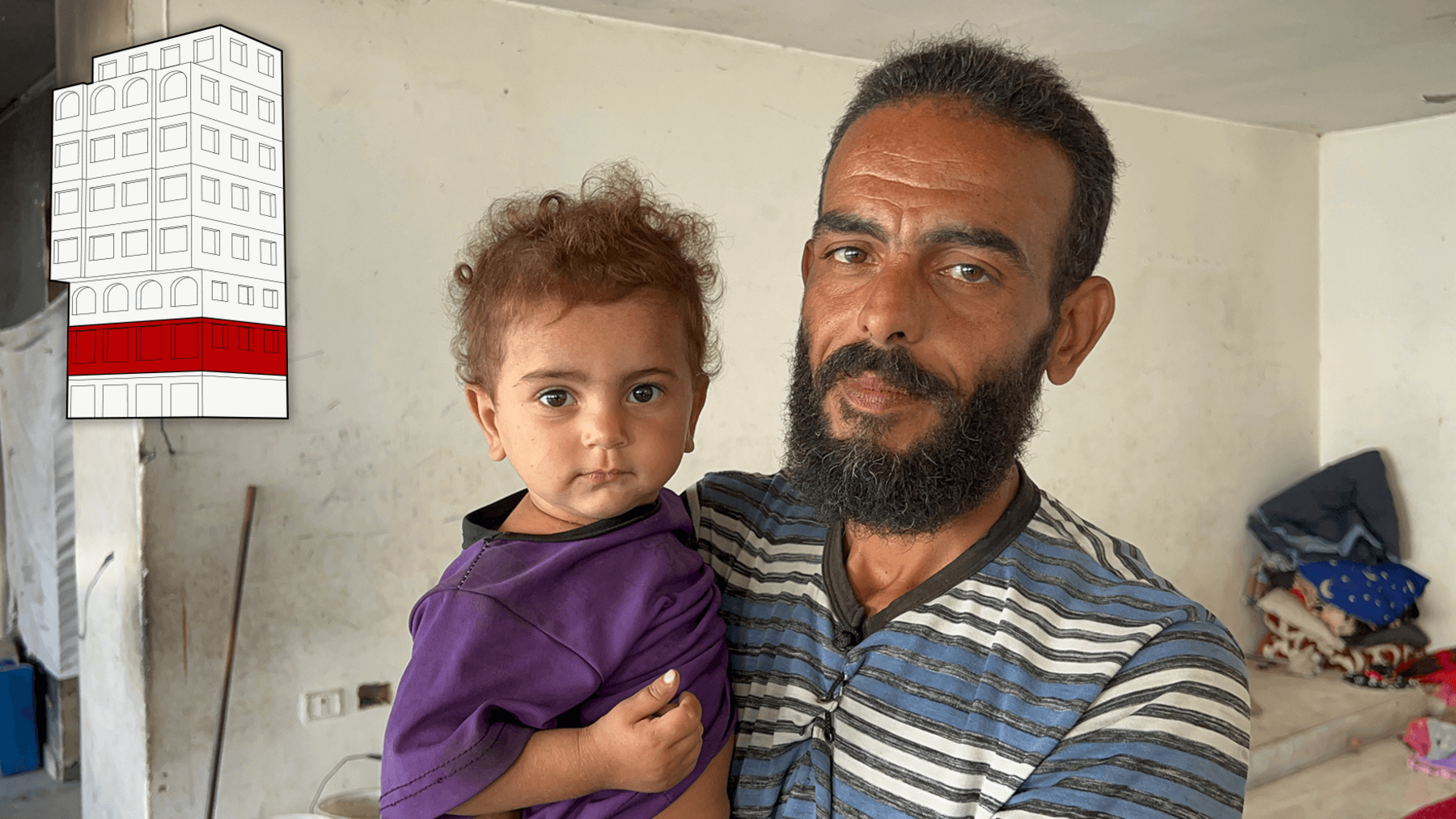
It's a feeling Shawkat al-Ansari knows well.
Originally from Beit Lahia, now razed to the ground, he told us his mother and sister were sleeping on the street in southern Gaza, while Shawkat lived with his wife and seven children on the first floor of the Skeik building.
Four months ago, his brother went missing.
"He went to get flour from the house of one of our in-laws in Shejaiya [on the northern edge of Gaza City]. We still don't know what happened to him. We searched everywhere but couldn't find him."
The constant churn of people moving in search of food, safety or shelter has made it hard to keep families together.
"We were living OK before," Shawkat said. "Now my brother is missing, and we're all stranded in different places."
One by one, the anchors holding people in place - home, community, family - have been loosened by the constant uprooting of Gaza's population and the razing of its neighbourhoods and streets.
Now, sitting in the empty concrete rooms of the Skeik building, Shawkat is also watching the future slip away. His children were doing well at school before the war, he says, but now they're forgetting how to read and count.
The constant movement is freezing their lives.
Days later, we received a call from Hadeel. She and several other families in the Skeik building were on the move again.
Israeli forces had dropped smoke bombs across the area, she told us, to signal that they were about to enter.
"We didn't see the tanks last night," she said, "but if we don't leave now, we'll wake up to them tomorrow."
Hadeel was packing up when we spoke, planning to join her brother nearby before trying to head south together.
"We'll stay on the streets and live in a tent," she said. "No matter what we do, nothing will rebuild what's inside us. My children aren't my children anymore. There's more suffering than innocence in their eyes now."
All across Gaza, the buildings left standing have become transit hubs for families, brought together then separated by the war.
If negotiations succeed, peace could end their journeys, and reconstruction could bring them a different kind of future.
But their old lives are behind them.
This war has wiped out the road to the past.
Additional reporting by Aamir Peerzada and Gaza colleagues. Design by the BBC's Visual Journalism team.
- Published14 October
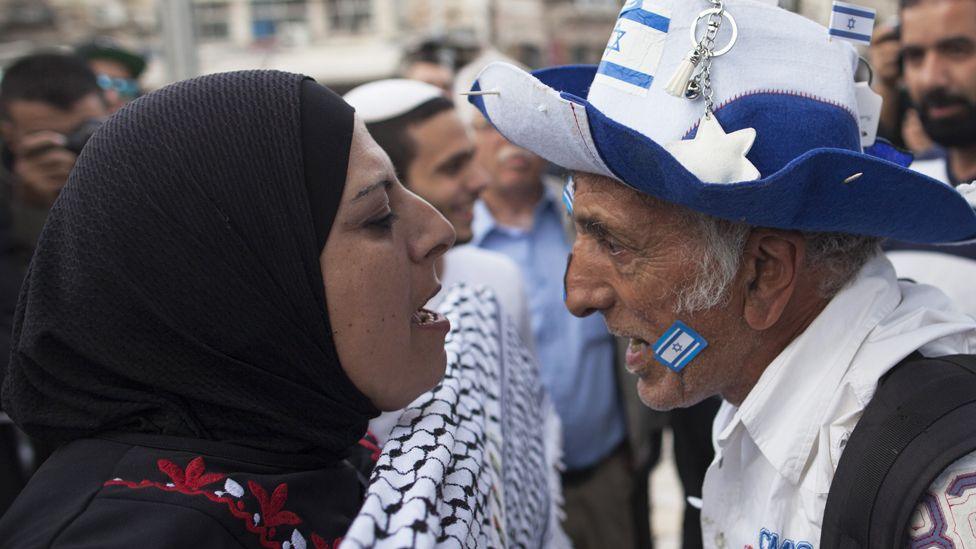
- Published14 October
